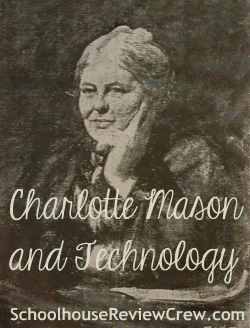Three years ago when I started homeschooling, one name kept coming up in conversation: Charlotte Mason. She was everywhere. Then I discovered she’d been dead for over 80 years, and I started to wonder what she had to do with twenty-first century homeschooling. So I started digging.
I discovered her premise contained twenty basic principles, but in a nutshell, she believed you should educate a child on their level, where they were at in the moment, that learning is nourishment for the mind, and she approached education methodically and logically putting God’s truths at the forefront of all knowledge. This lady was one smart cookie who created a progressive approach to education that actually emphasized a more scientific way of thinking. Her precepts are as valid today as in the early twentieth century.
Now let’s heat up the flux capacitor and flash forward. Our world is a far cry from what Miss Mason could have ever imagined. Her nature studies were limited to the local variety of trees, plants and animals; whereas my family has the opportunity to study a plethora of world-wide animals with access to the local zoo. While Charlotte’s art studies were restricted to books, local museums and traveling exhibits, we can go one step further by taking virtual tours of the Louvre. If she were alive today, I’m sure Charlotte Mason would be delighted with all of the opportunities afforded us for the education of our children due to the technology we have available.
But when using Charlotte Mason method as the main teaching premise in our homeschool, do we also include technology as a subject?
If Charlotte Mason lived now, do you think she would revise her basic subjects list to include technology?
My answer is yes.
Before any of you become incensed and stop reading, let me explain. Charlotte Mason was very progressive minded. During the time she developed her ideas on education, great scientific advancement were made. For example, around this time, Darwin dreamed up his Theory of Evolution (I didn’t say the studies were accurate). Earlier I stated when reading her basic principles, you find method and logic in her approach to learning. These were revolutionary ideas for the day. She would still have this revolutionary way of thinking if she lived today, and she’d continue to see the changing world and modify her ideologies accordingly.
So how can we adjust our mindsets to incorporate technology into our Charlotte Mason living studies? First we need to not be afraid to approach technology. Many parents see computer studies as an unexplored county that is unapproachable and should be feared. Kids don’t see it that way. They are eager to dive into website building, scripting, and programming. Don’t let those words intimidate you. There are many homeschool curriculums now on the market (and many more to come) that addresses all of these topics. Some are self-teaching programs that need very little input from parents. Some are more hands on, like the lesson plans on computer programming written by Andy Harris found on SchoolhouseTeachers.com. Other books aimed at homeschooled students in the field of technology can be found at your favorite online retailers, or resale websites.
As you see, it’s not difficult to update your Charlotte Mason way of thinking by adding technology studies. I challenge you to challenge your kids to become more techy driven with your subject planning.
 Rhonda Clark is a freelance writer, book reviewer, and busy homeschool mom. She and her family make their home is Memphis, Tennessee.
Rhonda Clark is a freelance writer, book reviewer, and busy homeschool mom. She and her family make their home is Memphis, Tennessee.
